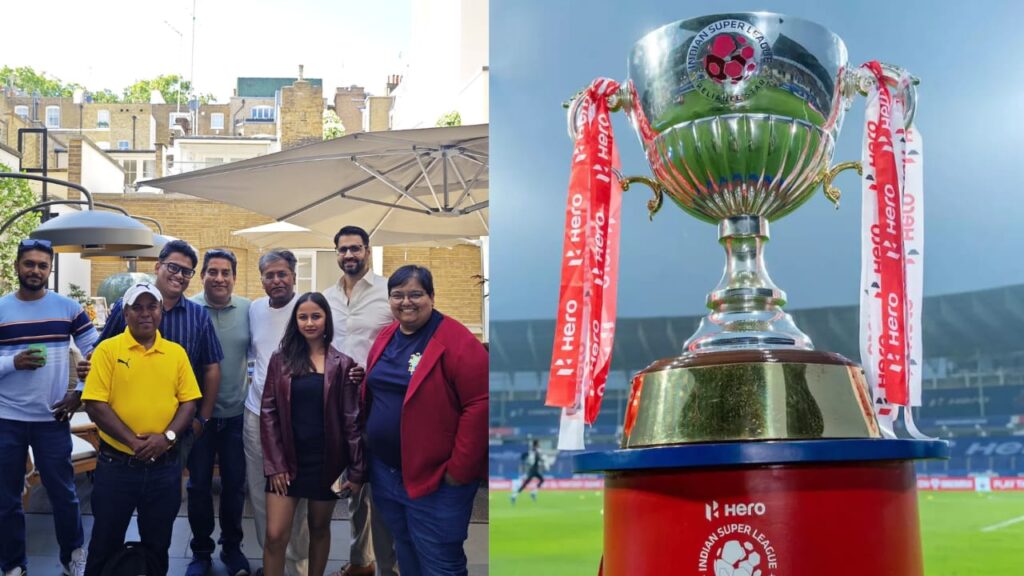
Rohan Chowdhury in London
In a candid and wide-ranging conversation with RevSportz at his London mansion, Lalit Modi, the architect of the Indian Premier League (IPL), opened up about his long-standing, but ultimately unrealised, vision for Indian football. From the failures of the system to the structural impossibility of replicating the IPL model in the sport, Modi didn’t hold back in his assessment of why football hasn’t taken off in India the way cricket has.
The question was asked, “You wanted something in Indian football along these lines at one point?”
“Yes, I did,” he replied.
Reflecting on his early involvement with Indian sports broadcasting, Modi said, “When I had a sports channel called ESPN, what was my job? My job was to create content and to get the best content. When we look at our country, the easiest thing to do is kick a ball around, and it’s (football) the cheapest sport to play. All you have to do is not even have shoes; you just need a ball. That’s all you need.”
For Modi, the simplicity of football was precisely what made it ripe for mass adoption. But that potential has never been realised. “I’m sure in a country like ours, we must have great talent, but nobody’s able to nurture them and find them,” he said. “I cannot believe that today, sitting here in 2025, we don’t have good football players.”
Modi contrasted this with global viewership habits, where audiences largely follow international football stars. “People, on the other hand, in countries only watch international stars,” he said. “IPL was not international. IPL was homegrown. You know, like when the media first wrote about IPL, I remember everybody wrote about it—they are the only ones who didn’t believe in it. Everybody asked, ‘Who is going to watch this? They don’t watch Ranji Trophy.’
This is not even a Ranji Trophy match. ‘Here, Lalit Modi is going out there and creating something that nobody will want to watch.’”
Don’t forget, the IPL came after a failed ICL (Indian Cricket League).
“Again, ICL had too much money,” Modi admitted. “It had too much money. It was a broadcaster that we couldn’t compete with. They took a half-baked idea of mine and tried to put it in there. I own the brand ICL. I let them continue with it.”
Tracing the origins of the ICL, he added, “I own Indian Cricket League. It was a brand that I started too early when [Jagmohan] Dalmiya was the head of the board, and Raj Singh Dungarpur was running it. It was a 50-over format. I wanted to develop it.”
But Modi’s ambition wasn’t limited to cricket. “I was also developing football,” he said. “I was looking at all sports. It wasn’t just cricket. I had signed an agreement with the J-League [in Japan]. Priyaranjan Das Munshi was the head of football in those days. I wanted to launch a football league. Then it got stuck again with politicians. Everybody wants a kickback. Everybody is saying, I will not allow you to do it.”
The obstacles were the same ones that plague Indian sport to this day: bureaucratic hurdles, short-termism, and corruption. “We were going to do what I was going to do with cricket,” Modi said. “I was going to do it with football. Again, there also, you needed international players. You don’t want retired staff. The problem is who was able to bring out the qualities of a player.”
At the beginning of the conversation, Modi highlighted the IPL model and how it grew to be the most successful sports and entertainment property in the country and how other sports should try to replicate it. But is it possible? For IPL, all the franchises were built in that same year. In football, if you see the clubs, these are legacy clubs, over 100 years old. They have their own rich cultural history. So, you can’t actually go and tell them, you will have a limited budget, and these are the players that you can pick from in an auction.
Modi agreed that football presented a fundamentally different structural challenge. “That’s an inherent problem with that,” he said. “With football worldwide, it’s a different model, and to change that model is impossible. It’s impossible.”
He acknowledged India’s footballing heritage, especially in pockets like Bengal, Goa, and the Northeast, but pointed out that heritage alone can’t fuel progress. “Again, the heritage comes into play because India does have a heritage,” said Modi. “But unfortunately, we have not been able to have players who are global enough. It’s a horse before the cart.”
Modi believes the problem is rooted in missing foundations. “Again, it’s infrastructure-related, it’s coaching-related, and it’s unfortunate. But I think football is not going to happen in India. I think the next best thing you would find is probably Kabaddi.”
For someone who transformed the sporting landscape with the IPL, Modi’s frustration with football stems from what he sees as wasted potential and a system unwilling—or unable—to change. His vision, it turns out, was never just about cricket. It was about unleashing India’s talent across sports. But in the case of football, that vision remains stuck in neutral, mired in politics, inertia, and structural complexity.